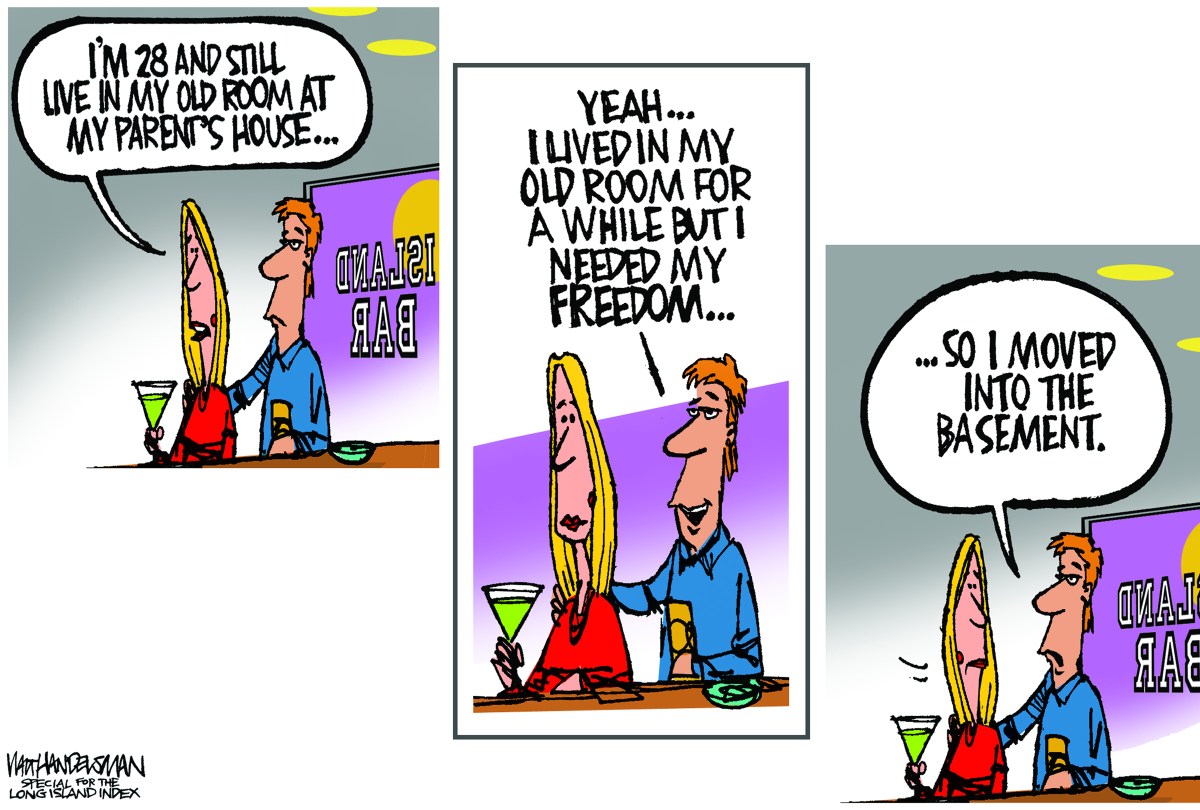By Nancy Rauch Douzinas
Long Islanders want more housing options, and the economic growth of the region requires them. The good news is that two recent studies by the Long Island Index, a project of the Rauch Foundation, highlight the specific challenge and reveal a way to overcome it.
Two dramatic shifts in housing needs have emerged that necessitate change. The first is that an increasing number of Long Islanders are looking for alternatives to the traditional single-family home for which Long Island is world-renowned. The second is that without those choices young people are leaving Long Island at an alarming rate, and the trend is projected to increase.
In December the Long Island Index released a public opinion survey that explored attitudes about housing among residents of Long Island and compared their views with those of other nearby suburbs. The report containing those results revealed that, for Long Islanders, concerns about paying their monthly housing costs have reached an all-time high: 62 percent of Long Island residents say that it is somewhat or very difficult to pay their rent or mortgage compared to 52 percent of residents in New Jersey suburbs and 58 percent of those in the northern suburbs of New York and Connecticut. In addition, 35 percent of Long Islanders aged 18 to 34 say they’re living with their parents or a relative.
According to the survey, 72 percent of Long Islanders rate young people leaving as a very or extremely serious problem compared to 44 percent of suburban New Jersey residents and 50 percent of those in the northern suburbs of New York and Connecticut.
Along with those worries, the report highlighted two trends that are quite dramatic: first, a sea change is occurring in the housing options that Long Islanders prefer; second, the vast majority of Long Island’s young people say they are likely to leave because of our housing costs here.
At present 15 percent of Long Islanders live in an apartment, a condominium or a townhouse, but in five years 29 percent say they want to live in one of those options. In addition, 69 percent of Long Island residents aged 18 to 34 claim they are somewhat or very likely to leave Long Island in the next five years. That finding is all the more striking, given that our population in that same age group has already dropped 16 percent from 1990 to 2014.
The most recent Long Island Index report, issued earlier this month, explores the challenge further and proposes ways to address it that match Long Islanders’ stated preferences. This report was conducted by the Regional Plan Association and HR&A Advisors. It found an enormous gap between the multifamily housing planned and needed on Long Island.
In the next 15 years 94,000 housing units would be needed, and, given changing housing preferences, 72,000 of those units should be in “walkable” mixed-use areas.
Fortunately, the report includes three cases studies that demonstrate that modest changes in zoning regulations could allow enough housing to eliminate the gap. The case studies focus on the Village of Babylon, the Hamlet of Hicksville and the Village of Valley Stream.
35 percent of Long Islanders aged 18 to 34 say they’re living with their parents or a relative
In Valley Stream, for instance, a series of feasible zoning changes—such as establishing a minimum unit size of 850 square feet, increasing maximum lot coverage to 60 percent, and increasing the maximum building height from three stories to four stories—could create almost 800 new, more affordable, multifamily, housing units in the downtown.
Such zoning modifications are consistent with the future that Long Islanders want. According to the Long Island Index public opinion survey, there is broad support for making local downtowns more residential, and a majority of Long Island residents support raising height limits in local downtowns to allow the addition of apartments.
Long Island’s housing outlook can be bright if we address collectively this growing need for multifamily housing and we take the relatively conservative steps of opening up our downtown areas—especially those with Long Island Rail Road stations—to more multifamily housing. By concentrating that housing downtown and ensuring that it offers a range of housing types and costs, we will increase economic activity on Long Island and provide Long Islanders with the residential options that they say they want and need.
Nancy Rauch Douzinas is president of the Rauch Foundation.

































